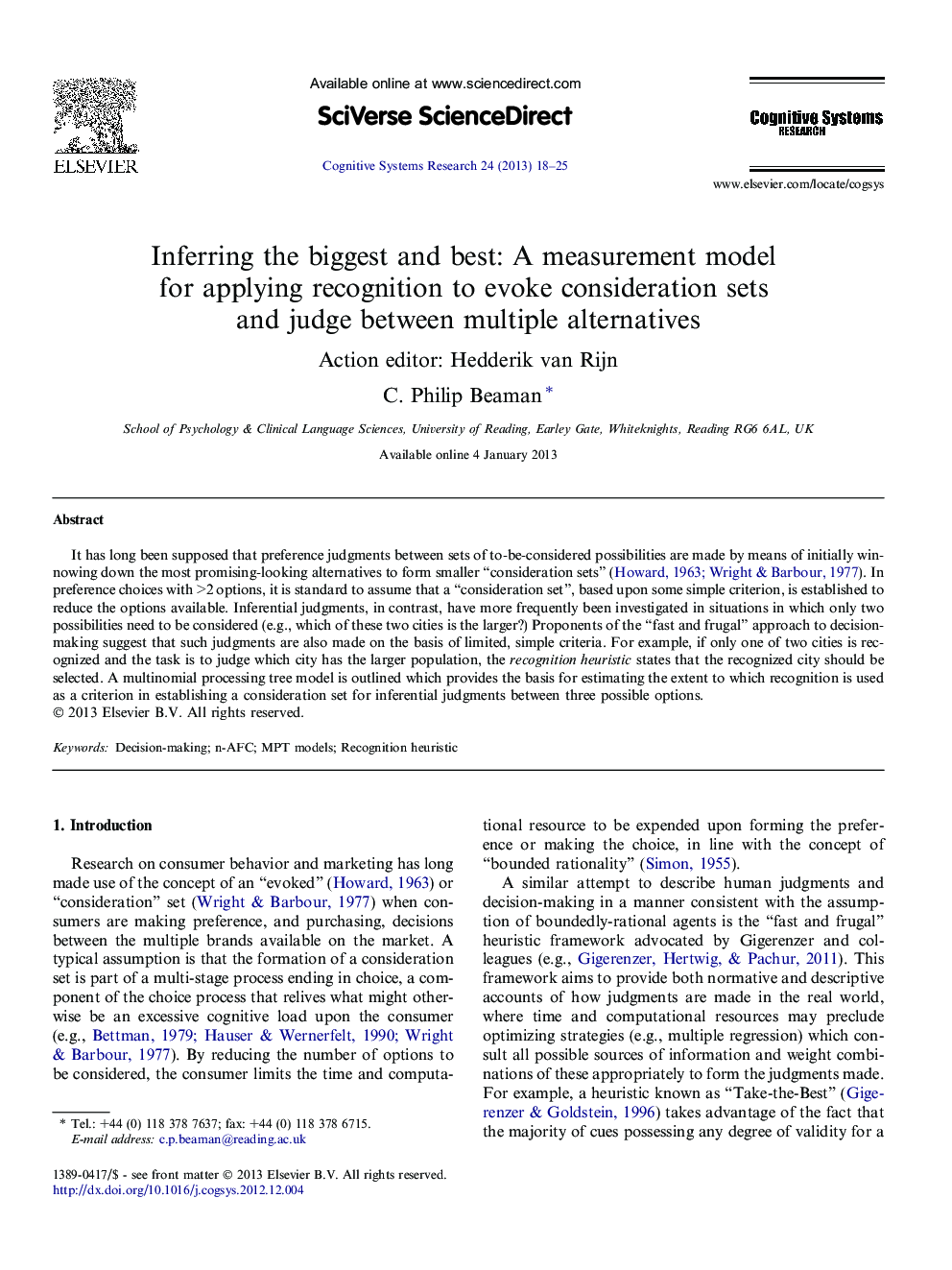| Article ID | Journal | Published Year | Pages | File Type |
|---|---|---|---|---|
| 378421 | Cognitive Systems Research | 2013 | 8 Pages |
It has long been supposed that preference judgments between sets of to-be-considered possibilities are made by means of initially winnowing down the most promising-looking alternatives to form smaller “consideration sets” (Howard, 1963 and Wright and Barbour, 1977). In preference choices with >2 options, it is standard to assume that a “consideration set”, based upon some simple criterion, is established to reduce the options available. Inferential judgments, in contrast, have more frequently been investigated in situations in which only two possibilities need to be considered (e.g., which of these two cities is the larger?) Proponents of the “fast and frugal” approach to decision-making suggest that such judgments are also made on the basis of limited, simple criteria. For example, if only one of two cities is recognized and the task is to judge which city has the larger population, the recognition heuristic states that the recognized city should be selected. A multinomial processing tree model is outlined which provides the basis for estimating the extent to which recognition is used as a criterion in establishing a consideration set for inferential judgments between three possible options.
